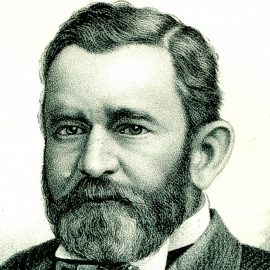

This article is an excerpt from the Shortform book guide to "Stamped from the Beginning" by Ibram X. Kendi. Shortform has the world's best summaries and analyses of books you should be reading.
Like this article? Sign up for a free trial here.
How did the Enlightenment movement challenge racism? What were the major antiracist developments of the Enlightenment period?
According to Ibram X. Kendi, the author of Stamped from the Beginning, the Enlightenment period contains the first examples of antislavery sentiment and attempts to challenge racism. Enlightenment thinkers promoted political ideals of democracy and universal equality, which opposed the institution of racism.
Keep reading to learn about racism in the age of Enlightenment.
The Birth of Anti-Racist Rhetoric
By the time the Colonies began to fight for their independence (starting in the 1760s and culminating with 1776’s Declaration of Independence), slavery and the racist ideas were entrenched in American society. With the advent of the Enlightenment, racism rhetoric began to slowly fade away.
But meanwhile, Enlightenment science—with its emphasis on rationality and order—created a biological hierarchy of races (with Europeans, who deemed themselves to be the most rational race, on top). Kendi suggests that no one embodied these tensions more than Thomas Jefferson, whose conflicted attitudes about race helped shape the country in its early years.
Some Men Are Created Equal
According to Kendi, the Declaration of Independence reveals a contradiction in its author’s thinking. In the Declaration, the slave-holding Jefferson asserts that “all men are created equal”—resulting in an ambiguity that Kendi says reflects Jefferson’s larger ambivalence about race, as expressed in his often contradictory writings and actions. Kendi gives the following examples:
- Jefferson blamed the British for preventing Americans from abolishing slavery but also blamed them for inciting slave revolts. In either case, Kendi points out, the critical issue isn’t slavery or racism—it’s unwanted British influence.
- Jefferson opposed letting former slaves be part of free White society, arguing that it would lead to violence because Black people rightly had grievances against their White enslavers (an arguably antiracist and certainly empathetic statement) and because Black people are morally inferior (an openly racist statement).
- Jefferson insisted that only White people were beautiful and denigrated Black people’s appearance, but he also fathered numerous children with an enslaved mistress. Kendi points out that this contradiction was common under slavery, and in fact led to accusations that Black women were aggressively promiscuous—a myth that persists to this day.
In short, Kendi suggests that like many people in this period, Jefferson found himself caught between his intellectual ideals (which opposed slavery and racism) and his economic and political self-interest (which supported his continued enslavement of Black people).
The Science of Race
During the Colonial era, pro-slavery forces found support in new scientific attitudes about race. Kendi explains that from around 1730 to 1760, Enlightenment scientists like taxonomist Carl Linnaeus established pseudoscientific racial hierarchies that placed Europeans at the top (attributing to them qualities like intelligence, ingenuity, and lawfulness) and Africans at the bottom (citing traits like laziness, neglectfulness, and capriciousness). These hierarchies inspired similar hierarchies within the slave trade, as enslavers ranked slaves according to their national and ethnic origins, which were thought to determine a slave’s utility for various kinds of work.
Kendi points out that these kinds of hierarchies served two social purposes. First, they justified slavery by perpetuating the idea that Black people were inferior and benefited from slavery’s civilizing influence. Second, they helped prevent slave uprisings by widening the rift between poor White people and poor and enslaved Black people while also introducing racist divides within enslaved populations by ranking some slaves as “better” than others.
(Shortform note: Racial hierarchies may serve an additional purpose—imposing order on society. In Sapiens, Yuval Noah Harari argues that social hierarchies exist because they offer guidelines for interacting with people you don’t know personally. In other words, Harari argues that hierarchies—especially when they’re based on visual cues like skin color—help us determine who to interact with and how. Similarly, in Caste, Isabel Wilkerson argues that American racism is best understood as a caste system, meaning that it serves as the basis of social order by dividing people into groups and prescribing appropriate behaviors and lifestyles for each group.)
“Uplift Suasion” and the “Extraordinary Negro”
In the face of ongoing slavery and racism, some Black people and White reformers began to publicly argue for the abolition of slavery. While abolitionist arguments in America date back to the late 1600s, opposition to slavery gathered momentum through the 18th century, culminating in the gradual passage (from 1780-1804) of antislavery laws in Northern states. Kendi says that one of the main approaches in this early abolitionist movement was to demonstrate that Black people were (or could be) equal to their White counterparts. Kendi calls this approach uplift suasion—the idea that if Black people prove their intellectual, moral, or other capabilities, White people will realize that their racist ideas are wrong.
Unfortunately, Kendi says, this tactic was doomed from the beginning. For one thing, as we’ve seen, slavery existed not because enslavers believed in racist ideas, but because they benefited from slavery. Therefore, even if you discredited the ideas, the benefit remained and so would the institution.
Additionally, it was easy for racists to ignore evidence that contradicted their ideas. Kendi points out that when confronted with well-educated, articulate, and literate Black people, such as Cambridge-educated Francis Williams and published poet Phillis Wheatley, White racists dismissed them as “extraordinary negroes” who were exceptions to the general rule of Black inferiority.
Moreover, Kendi says, the basic logic of uplift is inherently racist. By suggesting that Black people can prove their worth by achieving White standards of intelligence, learning, culture, and so on, uplift implies that White standards are the superior standards to which all races should aspire (in the process dismissing any culture other than that of post-Enlightenment Western Europe).
Plus, Kendi points out, uplift shifts the blame for racial disparities onto Black people. If some Black people can “better” themselves by adopting White ideals, the implication is that “lesser” Black people have only themselves to blame for their situations and for racism itself. If only Black people as a whole behaved better, the logic goes, people would view and treat them better.

———End of Preview———
Like what you just read? Read the rest of the world's best book summary and analysis of Ibram X. Kendi's "Stamped from the Beginning" at Shortform.
Here's what you'll find in our full Stamped from the Beginning summary:
- How enslavers convinced themselves that slavery benefited slaves
- Why most antiracist reformers harbored racist thoughts
- How to achieve an antiracist society






